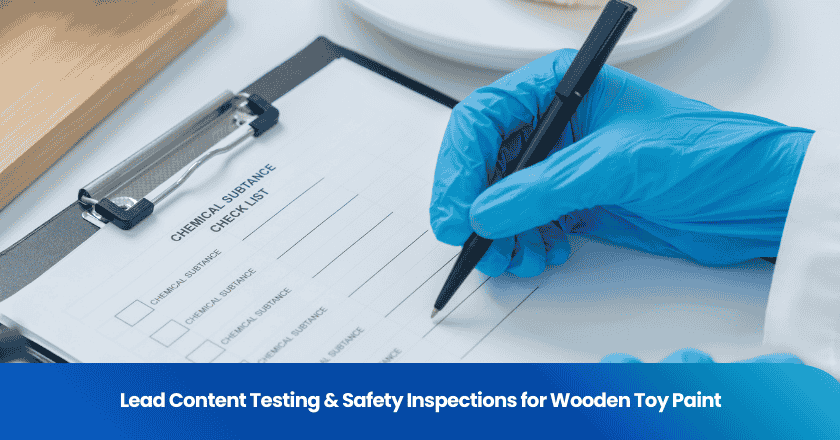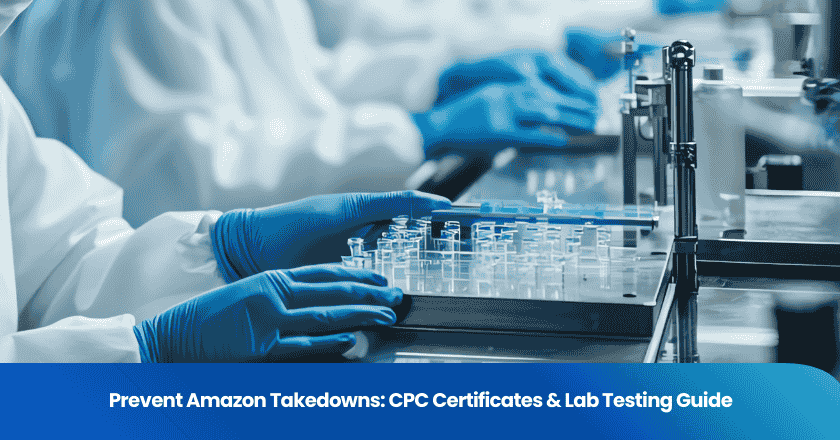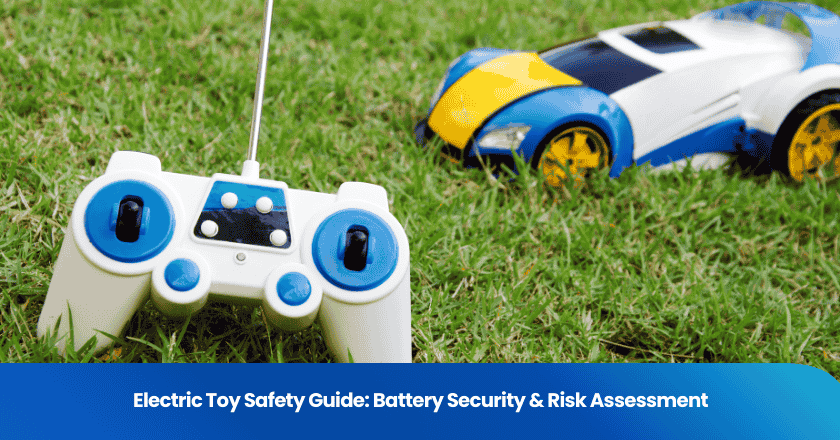
A third party inspection helps you ensure that your products meet the required standards. This process plays a vital role in verifying product quality and building trust with your vendors. By using third party inspection services, you can identify potential issues early and avoid costly mistakes. Following structured steps to start quality control ensures that every aspect of your inspection is thorough and effective. The importance of quality control inspection cannot be overstated, as it safeguards your reputation and ensures customer satisfaction.
Preparation Phase
Define Objectives and Scope
Identify the purpose of the inspection
Before starting the third party inspection process, you need to clearly define its purpose. Are you focusing on quality control, ensuring compliance, or mitigating risk? Each goal requires a tailored approach. For example, if your objective is quality control, you will need to evaluate product specifications and manufacturing processes. On the other hand, compliance inspections focus on meeting regulatory standards and vendor compliance requirements. A well-defined purpose ensures that your inspection aligns with your business needs.
Determine the scope of the inspection
Once you identify the purpose, determine the scope of the inspection. This involves specifying the product types, applicable standards, and inspection criteria. For instance, you might focus on high-risk products or those with strict regulatory requirements. A clear scope helps you allocate resources effectively and ensures thorough vendor due diligence.
Tip: A well-defined plan is the foundation of a successful inspection. Clearly outline the scope by focusing on specific product types, risk profiles, or time frames.
Create a Quality Control Checklist
List specific criteria and standards to be evaluated
To create quality control checklist, start by listing the criteria and standards for evaluation. These may include product dimensions, materials, and performance metrics. For example, you might assess whether a product meets acceptable tolerances or passes functional tests. A detailed checklist ensures consistency and accountability during the inspection.
Include product specifications, packaging, and labeling requirements
Your checklist should also cover packaging and labeling requirements. This is especially important for industries like food, pharmaceuticals, and electronics, where proper labeling ensures compliance. Include visual inspection guidelines to assess the product's appearance, such as color, finish, and packaging integrity.
1. Item specifications: Define dimensions, materials, and features.
2. Inspection criteria: Set standards for tolerances and performance.
3. Visual inspection: Check color, finish, and packaging.
4. Functional testing: Verify operational performance.
5. Documentation: Record findings for traceability.
Select the Right Third Party Inspection Services
Research and evaluate potential inspection companies
Choosing the right third party inspection services is crucial for effective vendor risk management. Start by researching companies with expertise in your industry. Look for certifications like ISO 17020, which demonstrate a commitment to maintaining high standards.
Consider factors like expertise, certifications, and reputation
Evaluate companies based on their global reach, industry-specific knowledge, and innovative tools. For example, some companies use drones for hard-to-reach inspections. Transparent communication and detailed reports are also essential for tracking quality metrics and addressing issues promptly.
As a reputable and trustworthy inspection and QA service provider, TradeAider is driven by visionary goals and missions. Our core strengths include the founder's dedication and extensive experience in global trade and manufacturing. We also have a vast network of over 80,000 quality control specialists worldwide, who are supported by the innovative TradeAider App to ensure successful quality assurance for any service orders placed by our clients. We take pride in being part of Amazon's SPN for quality control, alongside industry giants.
TradeAider distinguishes itself from other traditional inspection firms. We offer more than just lower costs; we are also far more efficient and transparent, leveraging digital tools. Our esteemed clients can effortlessly monitor the full inspection process in real-time via the TradeAider Web App. Additionally, we provide a Free Sticker-Attaching Service to ensure that clients receive only quality-compliant products. We also have a safeguard in place, along with a reliable "refund commitment," which instills trust from the very start.
Note: Selecting a reliable inspection company streamlines your vendor selection process and strengthens vendor compliance.
Establish Clear Communication with Suppliers
Inform suppliers about the inspection process and expectations
Clear communication with your suppliers is essential for a successful third-party inspection process. Start by explaining the purpose of the inspection and the steps involved. Suppliers need to understand why the inspection is necessary and how it benefits both parties. For example, you can highlight how inspections ensure product quality, compliance, and customer satisfaction.
Provide a detailed overview of the inspection process. Share information about the timeline, inspection criteria, and the role of the third-party service provider. This ensures that suppliers know what to expect and can prepare accordingly. Use simple and direct language to avoid misunderstandings.
Tip: Schedule a meeting or send a written document outlining the inspection process. This helps suppliers stay informed and aligned with your expectations.
Ensure suppliers provide necessary documentation and access
Suppliers play a key role in the inspection process by providing the required documentation and access to facilities. Request essential documents such as product specifications, certifications, and production schedules. These documents help the inspection team verify compliance with quality standards.
Encourage suppliers to grant access to their production sites and warehouses. This allows inspectors to evaluate raw materials, production processes, and finished goods. Without proper access, the inspection team cannot perform a thorough evaluation.
A real-world example demonstrates the importance of clear communication. Woolworths, a major retailer, successfully gathered 70% of the required product information from over 500 suppliers within just 8 weeks. This achievement highlights how effective communication can streamline the inspection process and improve efficiency.
Note: Set clear deadlines for suppliers to submit documents and grant access. This ensures the inspection process stays on track and avoids delays.
Use regular updates to maintain open communication throughout the process. Share feedback and address any concerns raised by suppliers. This collaborative approach builds trust and strengthens your relationship with them.
By keeping suppliers informed and involved, you create a smoother inspection process. Clear communication reduces errors, saves time, and ensures that your products meet the highest standards.
Execution Phase
Conduct Pre-Production Inspections
Verify raw materials and components meet quality standards
Pre-production inspections are essential to ensure that raw materials and components meet the required quality standards. You should perform early inspection of these materials to avoid potential risks during manufacturing. For example, verifying the quality of construction materials can prevent structural failures. Third party inspection services can independently confirm that materials comply with specifications, reducing the risk of defects later in the process.
Assess supplier readiness for production
Assessing supplier readiness ensures that production can proceed smoothly. You should evaluate whether suppliers have the necessary resources, equipment, and processes in place. This step minimizes risks and ensures compliance with quality standards. For instance, inspecting fire safety systems at the supplier’s facility can confirm compliance with safety regulations. By addressing issues early, you can avoid costly delays and ensure a seamless production process.
Perform During-Production Inspections
Monitor production processes to identify issues early
During-production inspections allow you to monitor manufacturing processes and identify problems before they escalate. Advanced technologies, such as IoT devices and real-time monitoring systems, can transform traditional inspections into data-driven processes. These tools provide immediate feedback, enabling you to perform early inspection and make quick adjustments.
Ensure adherence to quality standards during manufacturing
Maintaining adherence to quality standards during production is critical for risk management. Third party inspection services can help you monitor processes and ensure compliance with established criteria. For example, surveillance inspections provide ongoing oversight of manufacturing systems, reducing the likelihood of defects. By addressing issues in real time, you can maintain high-quality output and minimize risks.
Carry Out Final Inspections
Inspect finished products for defects and compliance
Final inspections serve as the last line of defense against defective products. You should thoroughly inspect finished goods to ensure they meet quality and compliance standards. This step includes checking for defects, verifying dimensions, and confirming that the product functions as intended. For example, an aerospace company improved its inspection process using a RAG system, which reduced inspection times by 40% and enhanced defect detection rates.
- Final inspections minimize the risk of shipping defective products.
- Efficient rework procedures can address issues before products reach customers.
Verify packaging, labeling, and shipping requirements
Packaging and labeling play a crucial role in quality control inspection. You must ensure that products are packaged securely and labeled accurately to meet compliance standards. This step also involves verifying shipping requirements to prevent damage during transit. By performing early inspection of packaging and labeling, you can avoid costly errors and maintain customer satisfaction.
Maintain Open Communication During the Process
Share real-time updates with suppliers and stakeholders
Keeping everyone informed during the inspection process ensures smooth operations and timely resolutions. You should prioritize sharing real-time updates with suppliers and stakeholders. This practice helps you address potential issues before they escalate. For example, if an inspector identifies a defect in raw materials, immediate communication allows the supplier to take corrective action without delaying production.
Open communication channels play a vital role in maintaining safety and quality. They enable inspectors and project managers to exchange real-time feedback, which is essential for resolving problems quickly. By fostering transparency, you create an environment where everyone feels empowered to share insights and suggestions.
- Real-time updates improve decision-making by providing accurate and timely information.
- Open dialogue strengthens team cohesion and encourages collaborative problem-solving.
- Leveraging technology, such as cloud-based platforms, enhances communication efficiency.
Tip: Use tools like instant messaging apps or project management software to streamline updates. These tools ensure that all stakeholders stay informed and aligned throughout the inspection process.
Address any issues or discrepancies immediately
When discrepancies arise during inspections, addressing them promptly is critical. Delays in resolving issues can lead to production setbacks or non-compliance with quality standards. You should establish a clear protocol for handling discrepancies. This includes identifying the root cause, implementing corrective actions, and verifying that the issue has been resolved.
Encouraging feedback from inspectors and suppliers can help you identify potential problems early. For instance, if a supplier reports a delay in material delivery, you can adjust the inspection schedule to avoid disruptions. Investing in training programs for your team also improves communication effectiveness, ensuring that everyone understands their roles and responsibilities.
- Prompt action minimizes the impact of defects on production timelines.
- Clear protocols ensure consistency in addressing issues across different projects.
- Training programs enhance the ability of teams to communicate and collaborate effectively.
Note: Regularly review and update your communication strategies to adapt to changing needs. This proactive approach helps you maintain high standards and achieve better outcomes.
By maintaining open communication, you can ensure that inspections run smoothly and efficiently. Real-time updates and immediate action on discrepancies not only improve quality control but also build stronger relationships with your suppliers and stakeholders.
Follow-Up Phase
Review Inspection Reports
Analyze findings and identify areas of concern
After completing the inspection, reviewing the reports is essential to identify areas that need improvement. Focus on analyzing the findings to pinpoint specific issues or patterns. For example, recurring defects in raw materials may indicate a systemic problem with a supplier. A thorough review helps you understand the root causes of non-conformities and ensures accountability.
- Post-inspection reviews enhance operations and build trust with regulatory bodies.
- Documentation of the review process strengthens compliance and resilience.
- Identifying systemic issues fosters a culture of continuous learning.
By carefully analyzing the reports, you can address potential risks and improve the overall quality of your products.
Compare results against the initial objectives and checklist
Compare the inspection results with the objectives and checklist defined during the preparation phase. This step ensures that the inspection process aligns with your goals. For instance, if your objective was to verify compliance with safety standards, check whether the inspection confirmed adherence to those standards.
Use the checklist to evaluate whether all criteria were met. This comparison highlights any gaps and provides a clear picture of the inspection's effectiveness. It also helps you measure progress and identify areas for future improvement.
Address Non-Conformities
Work with suppliers to resolve issues and implement corrective actions
When non-conformities arise, collaborate with your suppliers to resolve them. Start by discussing the inspection findings and agreeing on corrective actions. For example, if a product fails to meet quality standards, work with the supplier to adjust their manufacturing process.
Effective communication is key to resolving issues quickly. Share detailed feedback with suppliers and provide guidance on implementing corrective measures. This collaborative approach not only improves product quality but also strengthens your relationship with suppliers.
Re-inspect if necessary to ensure compliance
After implementing corrective actions, conduct a re-inspection to verify compliance. This step ensures that the issues have been resolved and that the products meet the required standards. Regular reviews and re-inspections reduce the risk of recurring problems.
Addressing non-conformities promptly minimizes risks and ensures that your products meet the highest quality standards.
Implement Continuous Improvement
Use insights from the inspection to improve future processes
Inspections provide valuable insights that can drive continuous improvement. Use the findings to refine your processes and prevent future issues. For example, if an inspection reveals frequent defects in a specific product line, consider revising the production workflow.
Leading indicators, such as defect rates or process cycle times, help identify potential problems early. By addressing these issues proactively, you can enhance the efficiency and reliability of your inspection process.
Update checklists and standards based on lessons learned
Regularly update your checklists and standards to reflect the lessons learned from past inspections. This practice ensures that your quality control inspection process evolves with changing requirements. For instance, if new regulations are introduced, incorporate them into your checklist to maintain compliance.
Continuous improvement not only enhances product quality but also reduces risks and builds a more robust inspection framework.
Starting a third-party inspection process requires careful planning and execution. You need to define objectives, create a detailed checklist, and select reliable services during the preparation phase. In the execution phase, focus on pre-production, during-production, and final inspections to ensure every product meets your standards. The follow-up phase helps you address non-conformities and improve future processes.
A quality control checklist ensures consistency, while clear communication with suppliers minimizes risk. By following these steps, you can enhance product quality and maintain compliance. Take action today to build trust and safeguard your reputation.
FAQ
1. What is a third-party inspection process?
A third-party inspection process involves hiring an independent company to evaluate your products or processes. This ensures compliance with quality standards and identifies potential issues before they escalate.
2. Why should you use third-party inspection services?
Third-party inspections help you maintain product quality, meet regulatory requirements, and build trust with customers. They provide unbiased evaluations, reducing risks and ensuring compliance with industry standards.
3. How do you choose the right inspection company?
Research companies with relevant expertise and certifications like ISO 17020. Evaluate their reputation, global reach, and use of advanced tools. Choose a company that aligns with your industry needs.
Tip: Look for companies offering transparent communication and detailed reports.
4. When should you conduct inspections during production?
You should conduct inspections at three stages: pre-production, during production, and post-production. This ensures quality control at every step and minimizes the risk of defects.
5. What should a quality control checklist include?
Your checklist should cover product specifications, packaging, labeling, and performance criteria. Include visual inspection guidelines and functional testing requirements to ensure thorough evaluations.
6. How do you communicate effectively with suppliers?
Provide clear instructions about the inspection process and expectations. Share timelines, criteria, and required documentation. Use regular updates to address concerns and maintain alignment.
7. What happens if non-conformities are found?
Work with suppliers to resolve issues and implement corrective actions. Conduct re-inspections to verify compliance and prevent recurring problems.
8. How can you improve future inspection processes?
Analyze inspection reports to identify patterns and areas for improvement. Update your checklists and standards based on lessons learned. Use insights to refine processes and enhance efficiency.
Note: Continuous improvement strengthens your quality control framework and reduces risks over time.

Smart Sourcing & Quality Assurance Content Team
Article by Smart Sourcing & Quality Assurance Content Team
The Smart Sourcing & Quality Assurance Content Team is dedicated to delivering high-quality, easy-to-understand information that empowers our audience to navigate the complexities of global sourcing and quality assurance. Our team of writers has extensive experience in creating content across various fields, including procurement, supply chain management, quality assurance, market trends, and industry best practices. We specialize in sectors such as apparel, textiles, and consumer goods, providing targeted insights to help businesses in these industries optimize their sourcing strategies, ensure product quality, and maintain a competitive edge in the market.
Grow your business with TradeAider Service
Click the button below to directly enter the TradeAider Service System. The simple steps from booking and payment to receiving reports are easy to operate.



